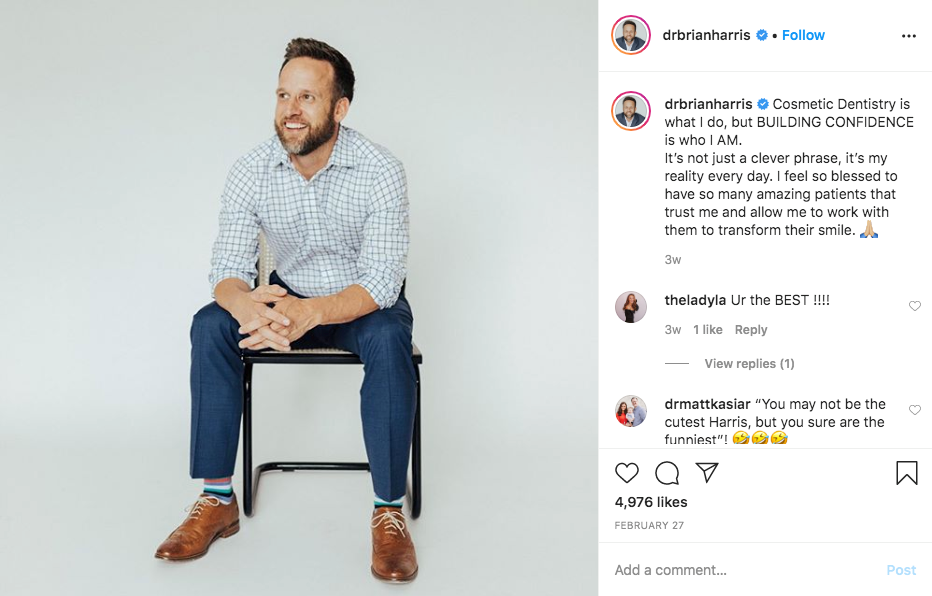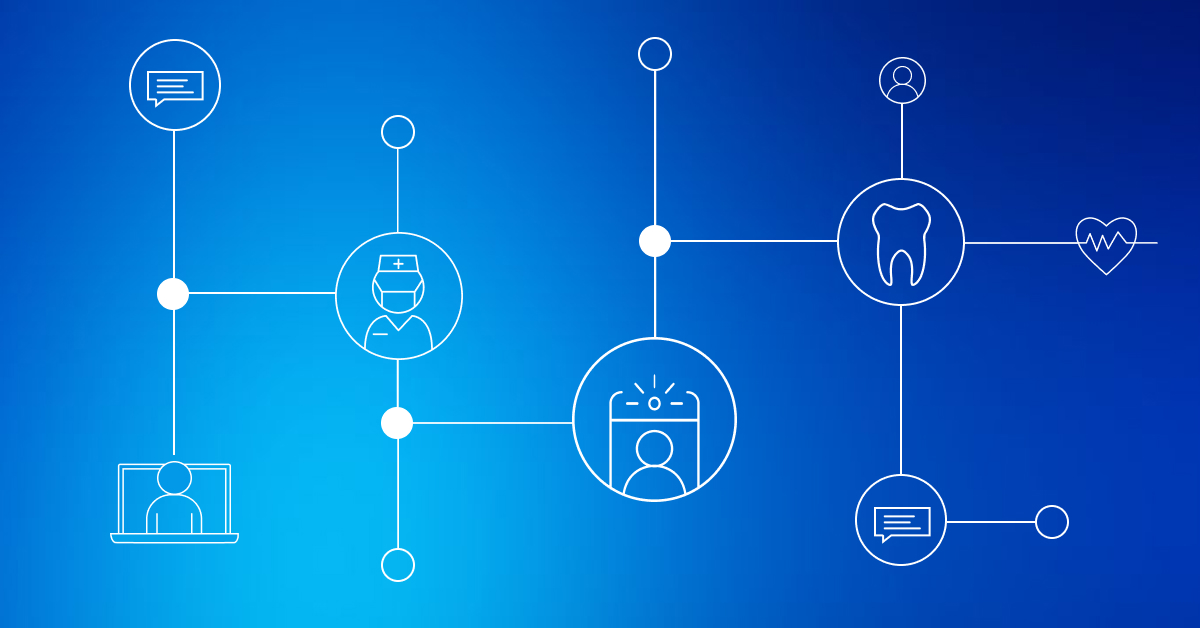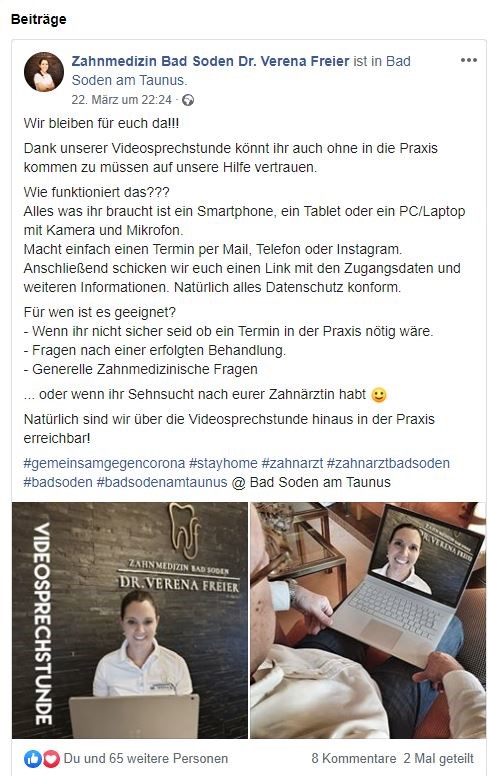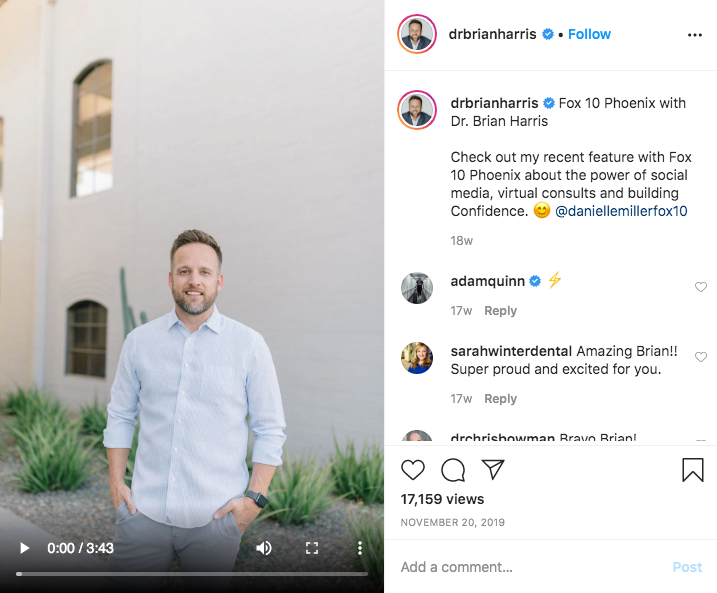The unprecedented global corona-halt is bearing down on all avenues of commerce and forcing industries to leverage creativity to stay productive. This is often manifesting in adopting technologies and stretching the current capabilities of telecommuting. Unfortunately for dentists, remaining productive can't be done by simply shifting morning huddles to Zoom calls. Clinicians have to interact with patients, simple as that.
This is giving early adopters of teledentistry a chance to shine, such as Dr. Brian Harris from the U.S., an Arizona-based clinician and founder of Smile Virtual. He hopes dentists use this "shutdown time" as an opportunity to explore new possibilities for their practices.
Harris believes the coronavirus's effects on dentistry will prompt clinicians to collectively adopt, or at least explore, this new frontier of patient communication. "It's an essential part of being able to keep lines of communication open, but I think more importantly, patients know about it—being able to still connect with your doctor is being talked about on the news, so now it's a "thing" and once it's a "thing," you can't really take it away."
Certainly Uncertain
Weeks of empty schedules (excluding emergencies) have dentists around the world struggling to find confidence in the future of their businesses. The unprecedented nature of this shutdown means there's little guidance available for clinicians trying to preserve their practices. "The problem is nobody knows how to handle a situation like this. [ . . . ] there's a lot of fear, there's a lot of panic, there's a lot of stress around it because we've never experienced anything like it," Harris says.
 Click the image above to view Dr. Harris's Instagram post.
Click the image above to view Dr. Harris's Instagram post.
Once some stability returns to the market, dentists will be eager to get patients flowing through practices once more—and while dentists will be looking to get business rolling, patients could likely be uber financially conservative, in the face of a predicted (if not already here) economic recession. "The number one focus on most of these patients is going to be 'I want to spend my money wisely because I don't know what's going to happen over these seven months," Harris says. "I think it will be an interesting thing that happens because I think there will be a massive group of dentists who will be all-in on providing value, on taking really good care of people, and focusing on the people. And then there's going to be a lot [of dentists] who will be stressing to focus on the production and the business sides. I think that's going to determine the success of a lot of businesses, because when you focus on the people the financial stuff comes after that. If you focus just on the business, you miss out on a lot of that stuff."
Convenience is King
Prior to coronavirus concerns, teledentistry has been carving out a space in the industry by prioritizing convenience. "Do people want to go and take time off work, get a babysitter for some of their kids to take the other kid to the dentist? Or do they just want their questions answered quickly, easily, honestly? That's the real power in virtual dentistry—it's not 'now I can connect with people and get more new patients.' It's more, you can really serve people, you can really help people, especially in a time like this," Harris says.
Dentistry is facing a paradigm shift, according to Dr. Harris, saying dentistry has historically been doctor-driven, very authoritative. "When we get back in this new [post coronavirus] economy, it'll be patient-driven”, says Harris.
Dr. Verena Freier from Bad Soden, Germany, shows how it can be done. When the corona crisis hit, she announced on Facebook that she is offering video calls to her patient in cases where personal visits may not be necessary.
This power of convenience will remain long after the coronavirus scare passes. "The more you can save people time, the better off you're going to be, Harris says. "I think that's what virtual dentistry, in my opinion, is about. It's helping people get their questions answered quickly, with transparency, and simplifying the whole process."
Dr. Harris believes this time is an opportunity for clinicians to use virtual dentistry to not only keep in contact with current patients while also attracting new patients, but to simply be available to answer questions when others aren't.
Getting Started
Incorporating new tech into a practice can be nerve-wracking, let alone when that technology will fundamentally change how a doctor interacts with patients. Dr. Harris says you just have to dive in, headfirst. "You go and you just do it. You figure out platforms and you just get in front of people," he says, offering three practical steps to get started in teledentistry.
1) Get someone on the phones, and when problems come through, have them set up a live video chat with the doctor. There are several apps to facilitate this, like FaceTime, Skype, and Zoom.
2) Have patients email photos of their problems to the office and the doctor can continue communicating via email. Harris admits that the email method is clumsy, and it doesn't feel like a personal interaction.
3) Utilize a platform, like Harris' Smile Virtual, where the patients can submit when they have time, then when the doctor has time, they record and send back a video along with recommendations and pricing. "It works great for the patient, and it works great for the doctor to be able to leverage time and to tell the patient everything they need to know and to streamline that process," says Harris.
Dr. Harris doesn't charge patients for his virtual consultations. "I may take ten minutes of my time to explain to somebody what their options are, and I look at that as a gift. I'm giving my time, the one thing I don't have enough of, [ . . . ] so a patient can know what's possible with their smile, how they can transform it, and what it's going to do for their self-confidence," he says.
Click the image above to view Dr. Harris's Instagram post.
New Problem, New Solution
The coronavirus is causing global commerce changes, with many industries leaning on technology to remain viable during this time of uncertainty. Adding a virtual element to interacting with patients may seem complex for dentists, but clinicians like Dr. Harris have already created a blueprint for implementing this tech into a practice. Properly leveraging this type of tech could help keep business afloat during this shutdown and could also help propel business once the coronavirus concerns subside.










